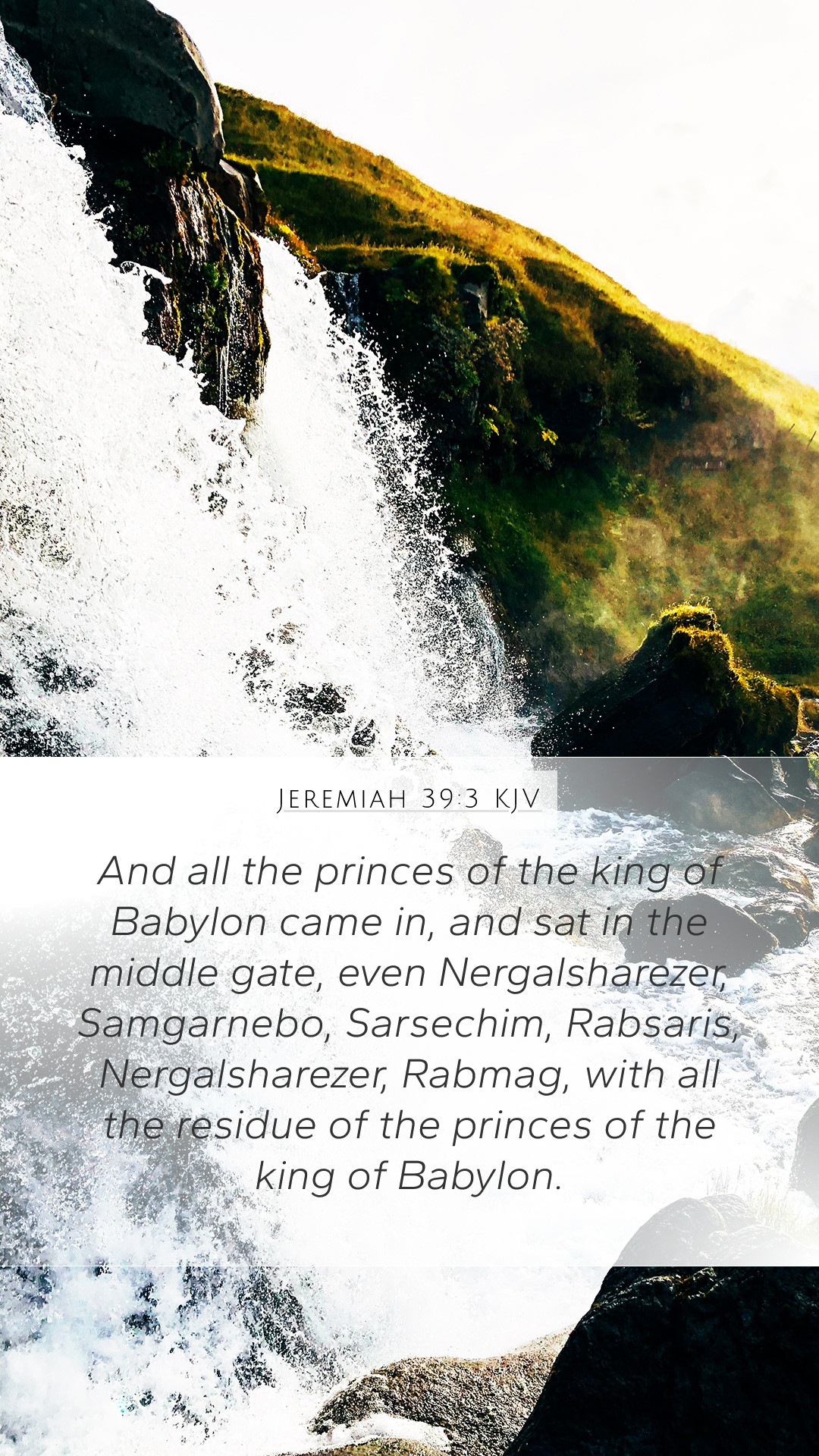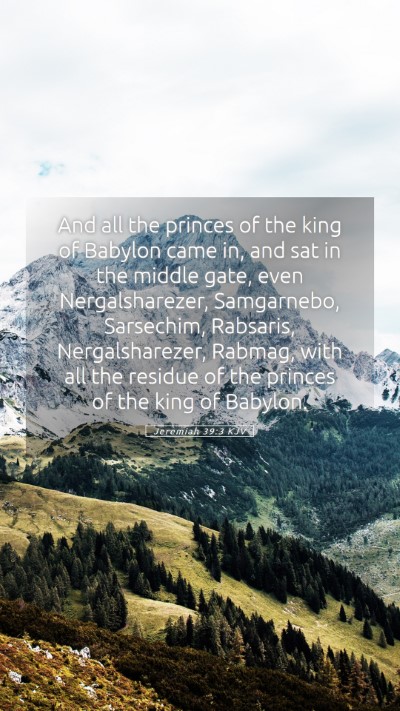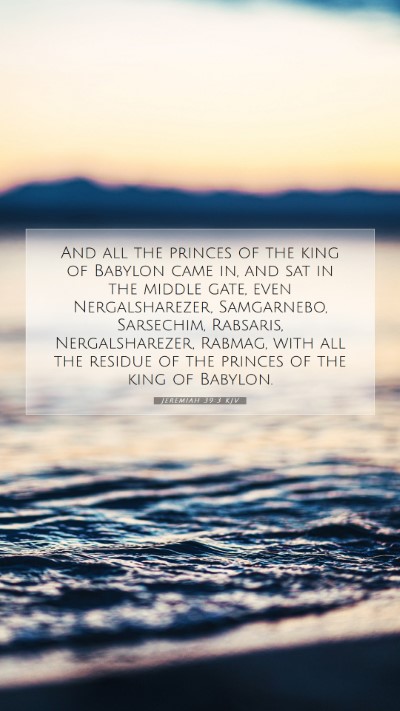Understanding Jeremiah 39:3
Jeremiah 39:3 states:
"And all the princes of the king of Babylon came in, and sat in the middle gate, even Nergal-sharezer, Samgar- Nebo, Sarsechim, Riblah, and all the residue of the princes of the king of Babylon."
Bible Verse Meaning
In this verse, the account depicts the moment when the Babylonian leaders made their entrance into Jerusalem after its siege. This event is of great significance in biblical history, symbolizing the fall of Jerusalem and the power shift that took place. The following insights from renowned public domain commentaries provide deeper Bible verse meanings in relation to this passage:
Insights from Public Domain Commentaries
Matthew Henry's Commentary
Historical Context: Matthew Henry emphasizes the importance of understanding the historical context of this passage. He notes that the leaders of Babylon entering the city signifies the culmination of God's judgment on Jerusalem for its idolatry and rebellion against Him. This moment shows the overwhelming power of a foreign king over God's chosen people.
Spiritual Implications: Henry suggests that the presence of these rulers serves as a reminder of the weighty consequences of sin and disobedience. The narrative illustrates the lesson that nations and individuals that oppose God's will face dire consequences.
Albert Barnes' Notes on the Bible
Geographical Significance: Albert Barnes provides insight into the geographical location of the "middle gate," marking it as a central point of access and a place for significant declarations and decisions. The gathering of the princes here indicates their authority and the finality of Jerusalem's fate.
Military Might: Barnes remarks on the military might represented by these leaders, asserting the fall of Jerusalem was due not just to human leadership but as a result of divine decree. This reinforces the belief that God governs the rise and fall of nations.
Adam Clarke's Commentary
Individual Significance: Adam Clarke elaborates on the names of the princes, such as Nergal-sharezer. He suggests that understanding who these individuals were, and their roles, provides deeper insight into the dynamics of power during that time. Clarke further emphasizes that the attention to individual leaders showcases the personal aspect of this judgment.
Prophetic Element: Clarke interprets the presence of these leaders as fulfillment of prophetic declarations made by Jeremiah regarding the fate of Jerusalem, thus reinforcing the theme of prophecy and its eventual realization within Scripture.
Combined Commentary Insights
From the amalgamation of these perspectives, we glean comprehensive Bible verse interpretations. Jeremiah 39:3 serves as both a historical occurrence and a profound spiritual lesson about God's sovereignty. It illustrates the historical context of exile and emphasizes the importance of recognizing God's judgment within our lives and nations.
Application to Daily Life
Understanding Scripture, such as this verse, is vital for Christians today. It prompts believers to consider:
- Reflection on Sin: Are there areas in our lives that parallel the disobedience of Jerusalem?
- Recognition of Authority: How do we understand the workings of God in current events around the world?
- Hope in Prophecy: What hope do we have in God's promises even when faced with dire situations?
Additional Bible Cross References
- 2 Kings 25:1-2 - The fall of Jerusalem
- Jeremiah 52:12-16 - The capture and destruction of Jerusalem
- Ezekiel 12:1-16 - Prophetic declaration about the exile
Conclusion
This analysis of Jeremiah 39:3 highlights the multifaceted meaning of Bible verses and emphasizes the importance of contextual understanding in Bible study insights. Each commentary provides valuable lessons that reflect both the historical significance and the spiritual truths that continue to resonate in the hearts and minds of believers today.


